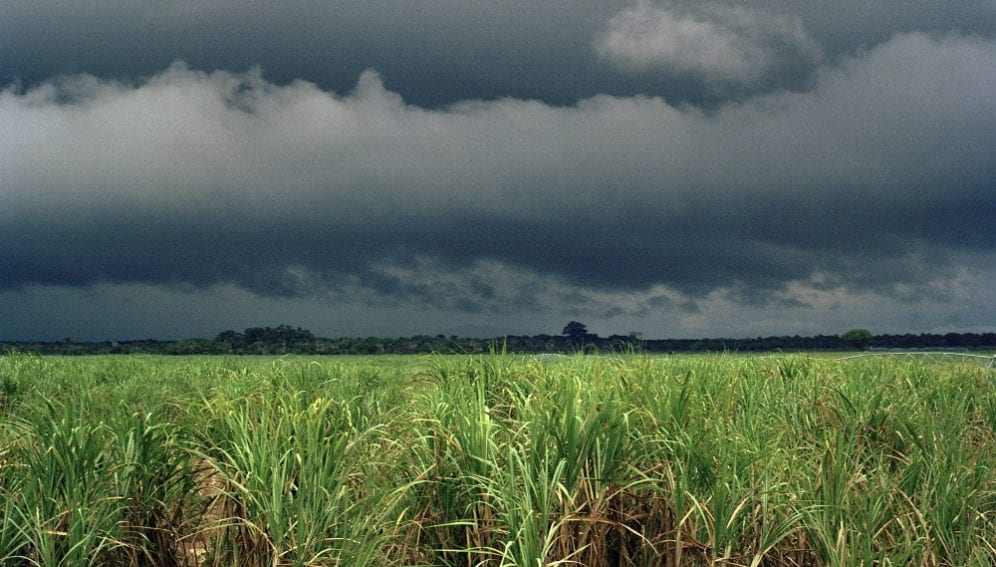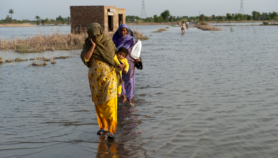By: Jose Galang
Send to a friend
The details you provide on this page will not be used to send unsolicited email, and will not be sold to a 3rd party. See privacy policy.
More than any other concerns that kept people in the Asia-Pacific region on edge in 2015, weather aberrations, threats of disease outbreaks, and weak yields in agriculture — which analysts all linked to global warming — proved to be the most challenging.
Fears of the Middle East Respiratory Syndrome coronavirus (MERS-CoV) spreading to the region from Arab states, where the virus had been discovered in 2012, heightened early in the year with reports of a large number of casualties in South Korea and one in China. A few cases were later reported in three South-East Asian countries but these patients all got timely treatment.
Floods caused by unusually torrential rains in many areas and long periods of drought in others also made living conditions tough in the past year for many people in the region. Exacerbating these was the onset of the El Niño dry weather phenomenon, which scientists say will last until well into 2016.
With the weather showing unusual patterns, the farming sector across the region was kept busy scrambling to protect crops. Ensuring food security became a worrisome task for farmers and governments.
More serious are the rising sea levels that have encroached on the shores of the Pacific small island states, slowly gnawing into land where residents have lived for many decades. The possibility of people having to abandon their homes and move elsewhere now seems real.
Towards the end of the year, all of these concerns and possible solutions and other options were tackled at the 21st session of the Conference of Parties (COP21) to the UN Framework Convention on Climate Change. The two-week conference in Paris came out with a largely reassuring document that listed a wide range of adaptation programmes and initiatives intended to mitigate the pernicious effects of climate change.
Against this background, an increased awareness about these events, aided in part by science reporting, sharpened vigilance and instigated defensive moves. The South-East Asia & Pacific (SEAP) team of SciDev.Net was actively involved in these efforts, coming up with news stories and analysis pieces aimed at informing and educating readers. A number of our articles earned particular notice and some of our writers got recognitions.
Typhoons and droughts
No sooner had the year started than Typhoon Mekkhala hit a Micronesian island (9 January), then gathered strength before lashing areas in the Philippines that only over a year earlier in November 2013 had been devastated by Super Typhoon Haiyan. Pope Francis was at the time in the Philippines and was forced to cut short a visit to a key site of Haiyan’s destruction.
But it was Typhoon Pam, described then as a “monster cyclone” owing to its ferocity, that caught the world’s attention when it ravaged the Pacific island nation of Vanuatu (13 March). It was the second storm with more than 300 kph winds to hit the region after Haiyan. Vanuatu president Baldwin Lonsdale described the extent of Pam’s damage at the Third UN World Conference on Disaster Risk Reduction shortly after, ending his presentation with a passionate appeal for the international community to “give a helping hand”.
A few more strong typhoons drenched communities in the region, with the more powerful ones striking the Philippines, Taiwan, South Korea and Japan. In November, the UN Economic and Social Commission for Asia and the Pacific released its Asia-Pacific Disaster Report 2015, which notes that for the region to achieve its Sustainable Development Goals (SDGs), countries will have to build greater resilience to disasters by coming together in the spirit of cooperation.
Countries vulnerable to typhoons and their hazardous effects such as flash floods, landslides and road freezing, will soon get early warning alerts from the planned Weather Information Service Engine (WISE), an integrated weather information system that is being developed by the Seoul National University and the Korean Meteorological Administration. Early preparedness can be a strong weapon against the effects of climate change, according to the officials behind WISE which is expected to go online by 2019.
The other side of climate change, drought, is also being severely felt across the region. In Thailand, the world’s largest exporter of rice, rice farmers have delayed planting owing to baffling rainfall patterns caused by a long drought. According to studies, this could lead to a shortage in world rice supply. But climate change adaptation, including the use of drought-resistant seeds, may still reverse the situation.
A promising discovery that could boost crops against droughts is a grass native to Australia and New Guinea, which has been found to have genes that enable it to regenerate after being sprinkled with water. The grass is capable of surviving prolonged droughts, and if the “resurrection” genes can be introduced to crops like rice and maize, food production can be sustained even in periods of dry weather.
This year’s haze resulting from Indonesian forests being cleared by local farmers to make room for new plantations, mostly oil palm, is the most serious since 1997. The smog spread to more countries and for a while the affected communities threatened to bring it to the COP21 for resolution. An agreement was forged instead to work out solutions among the countries affected.
Climate refugees
The phenomenon of “climate refugees” was another major story followed by SciDev.Net in 2015. Worsened by climate change, rising sea levels in the Pacific are proving to be real threats to livelihoods and quality of life in small island states. For instance, in Fiji, when the tides come in, sea water mixes with different household wastes, including sludge in toilets built in shallow positions, resulting in unsanitary environment that could breed diseases.
It is no wonder then that 7-in-10 households in Kiribati and Tuvalu and 3.5-in-10 in Nauru would opt to migrate if the effects of climate change (floods, sea level rise or droughts) worsen, according to a survey by the UN ESCAP and the UN University Institute for Environment and Human Security. The survey also revealed that only a quarter of these households have the financial capability to migrate. The rest, notes the survey, would be trapped in increasingly difficult environmental climates.
Those who can manage to leave for other countries are likely to encounter difficulties settling down as “refugees”. According to Mary Robinson, the UN special envoy for climate change, they cannot seek relief under the provisions of the Geneva Conventions on the protection of people displaced by conflict.
In the case of Kiribati, although there is a strong government relocation strategy for its people, Kiribati president Anote Tong insists that technology and climate science should be exploited aggressively to save the island state from sinking further and to enable its citizens to stay put where they want to live.
Innovations amid jitters
A decent list of innovative ideas and strategies for coping with the daunting effects of climate change emerged over the course of 2015. Some of them are home-grown and could prove to be useful immediately, but others can materialise after a few years’ development work.
Michael Price, a research associate with the Smart Villages Initiative, says in an opinion piece written for SciDev.Net that creating smart villages in vulnerable areas will help communities make themselves increase climate resilience and enjoy better living that access to clean energy can bring.
More South-East Asian countries are looking at launching commercial satellites to gather more information they can use for development. But questions on the need for these expensive assets persist even if data gathered through satellites are now increasingly used in a wide range of economic activities.
In Bangkok an IBM-developed supercomputer dubbed “Watson” is being used on a pilot basis to help improve the quality of cancer care and possibly reduce the costs of cancer treatment for sufferers. Also in Bangkok, a joint initiative by the UNFCCC and Japan-based non-profit Institute for Global Environmental Strategies launched the Regional Collaboration Centre, which seeks to support developing countries in the region in identifying and developing clean development mechanism projects that will help limit damage from climate change.
On a smaller scale, scientists at the Putra University Malaysia have discovered a green method to combat post-harvest disease in papaya fruit, offering farmers a healthier and cheaper alternative to fungicides. In Indonesia, the world’s third largest cocoa producer, a climate-friendly farming system called “carbon insetting” is being promoted for use in the country’s cacao plantations to reduce greenhouse gas emissions while also improving farmers’ livelihood and the cacao business, along with the environment.
As can be concluded from all these, science and development-related stories in the Asia-Pacific continue to grow, covering a wider range of human activities. The SEAP team of SciDev.Net will be your major source in gaining knowledge about these developments that are bound to affect our lives in this region.
This piece was produced by SciDev.Net’s South-East Asia & Pacific desk














